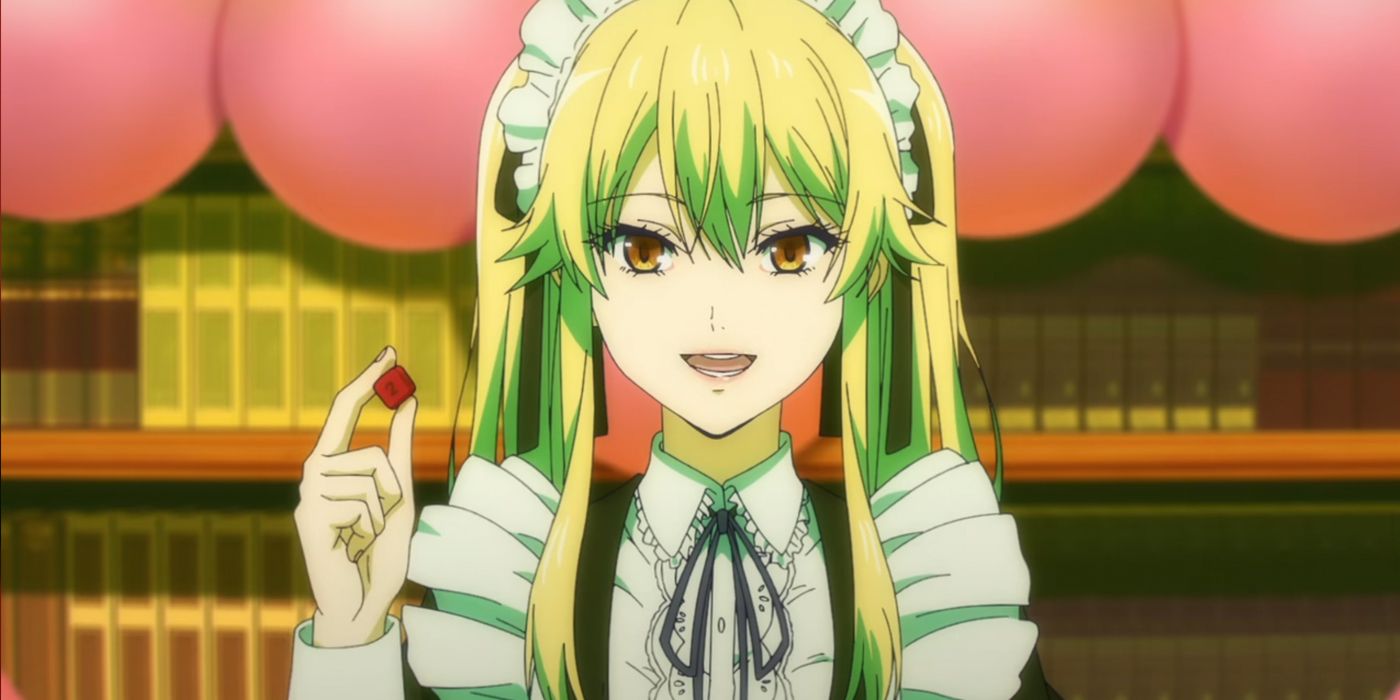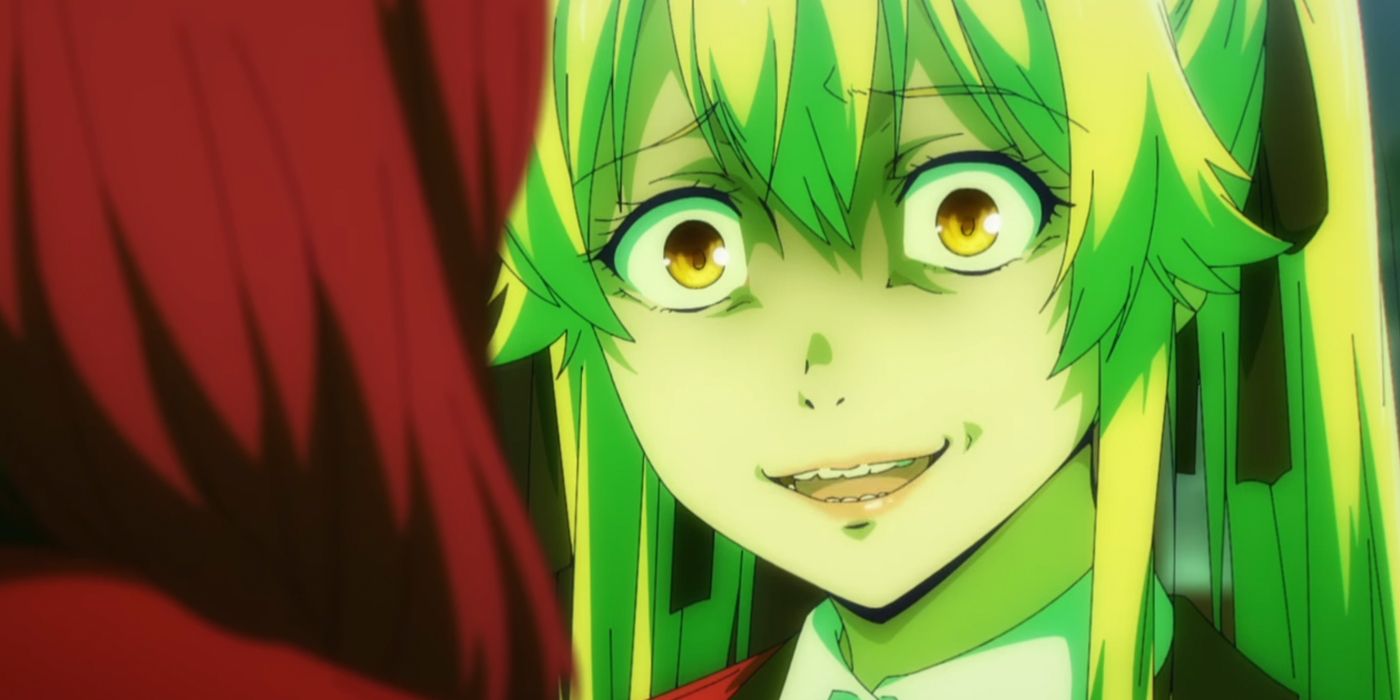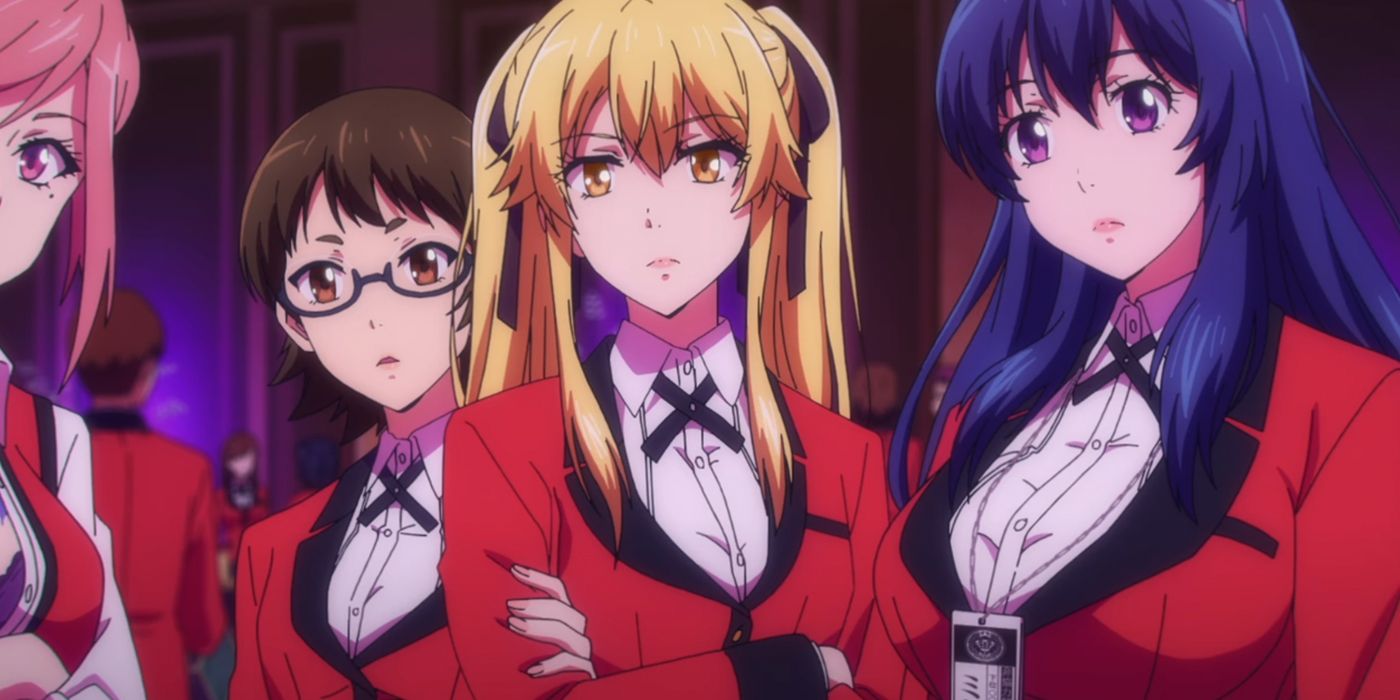The following contains spoilers for Kakegurui Twin Episodes 1-6, now streaming on Netflix.
Kakegurui Twin is a prequel to the main Kakegurui: Compulsive Gambler series that depicts Mary Saotome's first year at Hyakkaou Private Academy. While Mary is already a main character in the initial series and is known to be one of the best gamblers at the school, the original doesn't depict what she was like before becoming the overconfident yet ruthless cheater she's famous for being. The original series also hints at who her closest friends were prior to meeting Yumeko Jabami, but they aren't given a face until the prequel miniseries.
Now that the Kakegurui Twin manga has been adapted into a six-episode anime, it begs the question of how well it fairs against the original Kakegurui anime in terms of production. From the way Mary is developed as a character and how the story is paced to the animation and use of music, Kakegurui Twin does a lot to hold its own, and even manages to do some things better than the original series. Apart from being excellent supplementary material for fans of the Kakegurui franchise, it's also a great introduction to the story about a gambling school for fans who have not yet watched the first two seasons of the main anime.
The main selling point of Kakegurui Twin is the focus on Mary Saotome as the main character as opposed to constantly playing second fiddle to the main series protagonist, Yumeko. This allows the Twin storyline to spend more time developing Mary's character and depict more aspects of her personality that would otherwise not be given attention. This is most notable in the first episode of Kakegurui Twin where she transfers to the Hyakkaou Private Academy from her previous school and struggles to make friends. It showcases a more vulnerable side of Mary, who wants to be accepted by her peers and doesn't want to be made an outcast.
Ironically, the first person Mary befriends is an old classmate she knew in primary school named Tsuzura Hanatemari. The latter had been attending Hyakkaou for some time and became a house pet within the school's caste system. Upon learning about this cruel system, Mary decides she wants to change it so that no student is subjected to merciless bullying, effectively establishing she has a moral compass. Of course, in order for her friend Tsuzura to be relieved of her house pet status, Mary has to play by the school's gambling rules -- and needs to actually win.
After her first taste of gambling, Mary discovers she has a talent for it. She soon begins challenging other students as a way of climbing the ranks of her school, just like she does in the main series. One difference, however, is that Mary is motivated by a desire to protect other students from the sadistic student council president, Sachiko Juraku. Mary's strong moral inclinations immediately intrigue Sachiko, to the point where she finds new ways to challenge Mary to see what will finally break her and comes close to succeeding several times. The more Mary demonstrates a strong resolve and determination to win, the more desperate Sachiko becomes in obtaining her as a house pet.
The strong writing for Mary's character is, of course, augmented by the animation. Not only does the artwork succeed at capturing the more manic aspects of Mary's personality but also her vulnerabilities. In scenes that depict Mary's overconfidence, she is shown to be wide-eyed with a creepy smile stretched across her face. These are strongly indicative of the nervousness she feels underneath her bold insults and condescending behavior. When she especially finds herself losing a game or in other threatening situations, Mary is shown to scare and anger easily, which easily delights Sachiko.
Part of what sells Mary's unpredictable emotions is the anime's color palette. For scenes that depict Mary's contradictory emotions, cool colors are contrasted with warm colors. In scenes where Mary is calm and collected, a cool color palette is used, while scenes where she loses control of situations and internally panics feature a warm palette. Mary, however, isn't the only one given a color palette that conveys her emotional states. Sachiko is also consistently presented in cool colors to convey how in control she is of every situation. Another character featured in Kakegurui Twin who gets her own color palette is Midari Ikishima, who is often presented in purple hues to indicate the villainous nature hiding beneath her manic façade.
Another aspect of Kakegurui Twin that helps augment the story and Mary's characterization is the music. For a story that's fast-paced and straightforward, it is equally accompanied by rapid music numbers that incorporate jazz with rock and dance tracks. Not only does this combination help convey the high stakes Mary and other characters find themselves in, but it also conveys the chaotic nature of the gambling school. The more jazzy aspects of the music even help convey an appropriately "casino" feel to the gambling dens. On the whole, Kakegurui Twin is an equally well-made anime adaptation of the manga prequel that continues the tone and feel of the main series, while placing more spotlight on one of the more popular characters.



